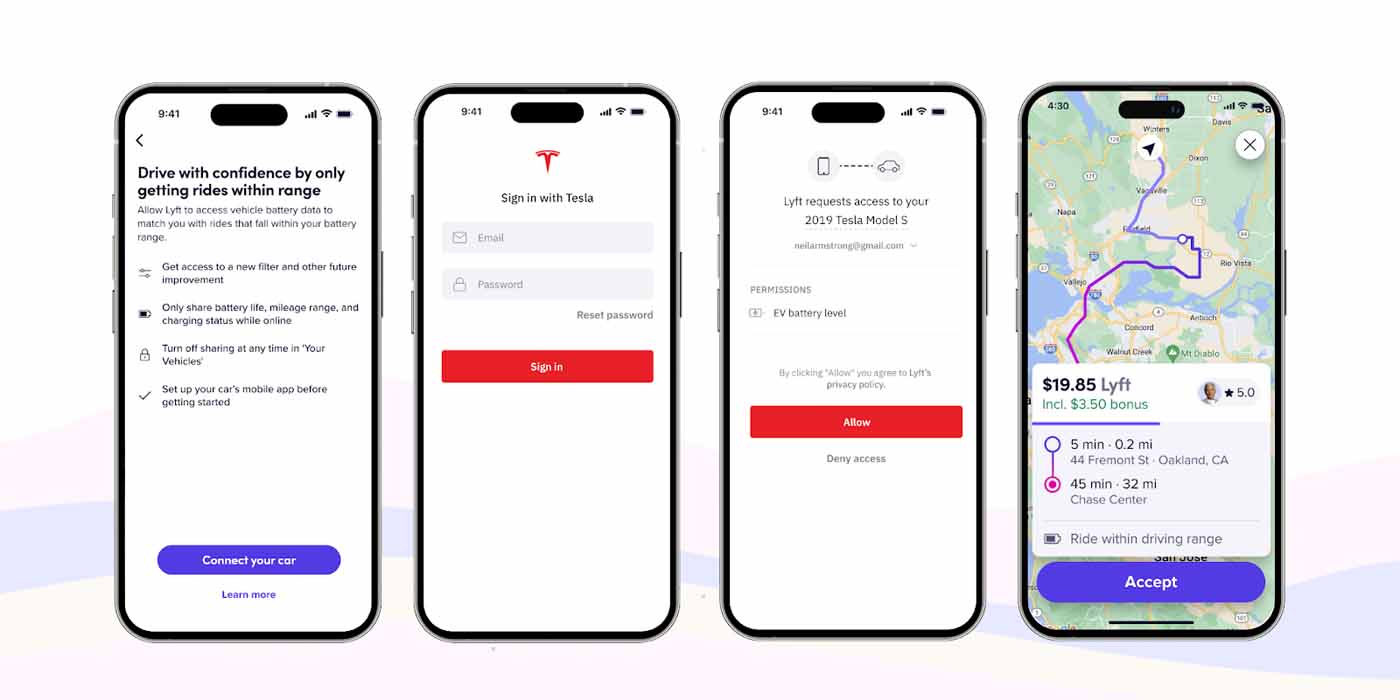
Lyft continues to empower its gig economy drivers by tackling a significant pain point for its current base of EV drivers: range anxiety. With the help of the API platform Smartcar, Lyft has introduced a new feature that only enables ride requests within a driver’s available EV range.
As one of the world’s leading rideshare networks, Lyft’s entire business is built upon its drivers and the dependability of their vehicles. On Electrek, we promote EV adoption across all segments and have reported on several benefits of EV adoption in the gig economy and rideshare segment in particular.
Lyft recognized these advantages early on and has made strides to help promote EV adoption by incentivizing its drivers to go electric while simultaneously implementing incentives to alleviate some of the pains that currently plague the industry.
For instance, Lyft partnered with EV charging network Electrify America, which implemented discounts for the rideshare company’s drivers across all of its stations. Lyft also introduced a “suite of offerings” to potential EV drivers, including new earnings incentives and other charging discounts.
Today, API specialist Smartcar announced it has partnered with Lyft to help provide the latter’s EV drivers with a handy new tool to keep their rides going without worrying about running out of battery during a trip.

According to a release from Smartcar today, it has partnered with Lyft to implement its API platform with the goal of alleviating range anxiety for EV drivers while they are out driving “on the clock.”
Smartcar’s API technology enables a new feature called “Rides in Range,” which ensures EV drivers only receive ride requests within their vehicle’s current battery range.
The new tool is now available for Lyft EV drivers and has a 20-mile buffer on the driver’s given range to accommodate different driving styles or route obstacles that may entail a longer, more energy-heavy journey.
Lyft states that range anxiety remains the top concern for EV drivers on its platform since those individuals want to avoid interrupting trips to charge, being unable to find a charger during a ride, or worse, running out of battery altogether. Lyft product manager Ciara Chow elaborated:
At Lyft, we’re all about making life easier for drivers on our platform, and we know that range anxiety is a big deal for those with electric vehicles. That’s why we’re so excited about our new ‘Rides in Range’ feature, thanks to our partnership with Smartcar. Now, our drivers can take on rides without constantly worrying about their battery levels. It’s a game changer that helps them focus on what they do best – providing great rides for people who need them.
Smartcar says its API retrieves EV battery level data from Lyft drivers in real-time, enabling the “Rides in Range” feature to alert drivers to charge after completing a trip if their battery level is expected to fall below 20%. Per the release:
By combining automatic trip-matching and proactive EV charging reminders, Lyft aims to build an efficient and convenient experience for EV drivers and passengers using the platform.
With Rides in Range, EV drivers on Lyft don’t have to deal with the cognitive burden of evaluating battery range for each request. Accurate and automated ride assignments with EV battery data retrieved via Smartcar help Lyft drivers take on more trips with confidence, boost ratings, and increase tips from customers.
The companies state that this new EV-centric feature is automatically enabled for future rides once a driver connects their electric car to the Lyft app via Smartcar. The API is consent-based and ready for immediate onboarding after that, so there is no need for any technical upgrades or security concerns.
Smartcar states that the one-time API setup ensures drivers only share the necessary data permissions with Lyft, maintaining privacy while improving the electric vehicle owners’ user experience. You can learn more here.
FTC: We use income earning auto affiliate links. More.







